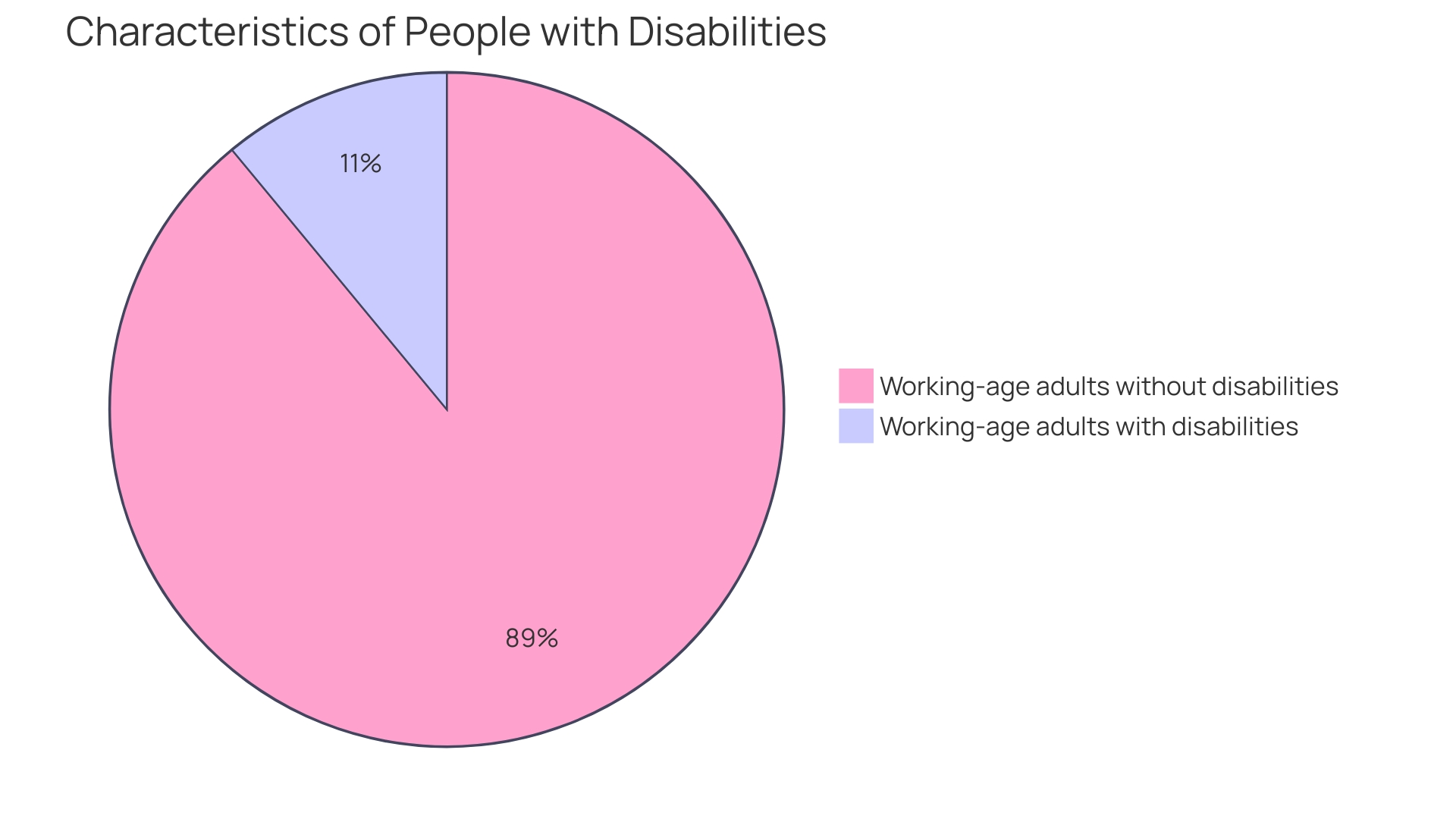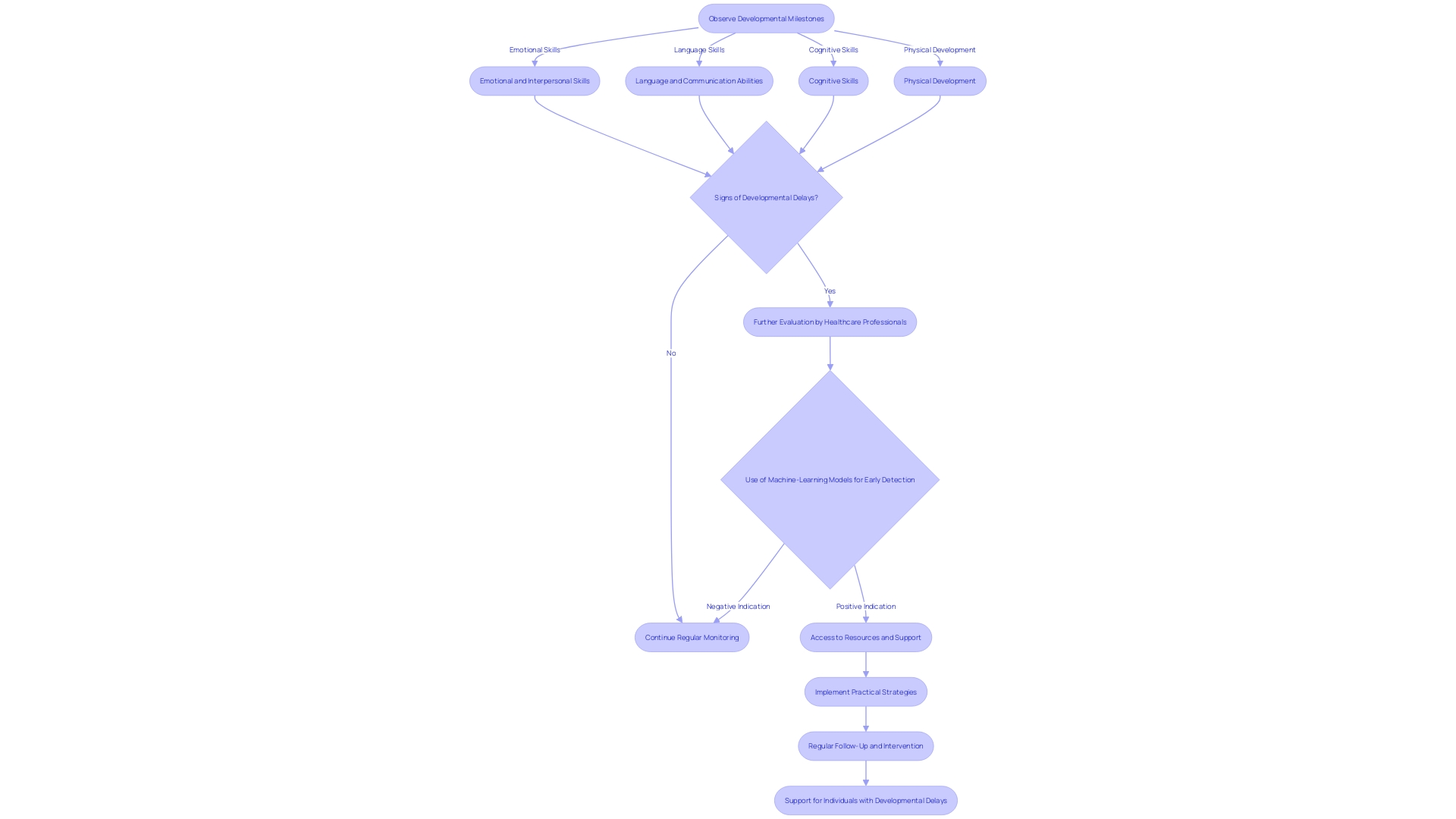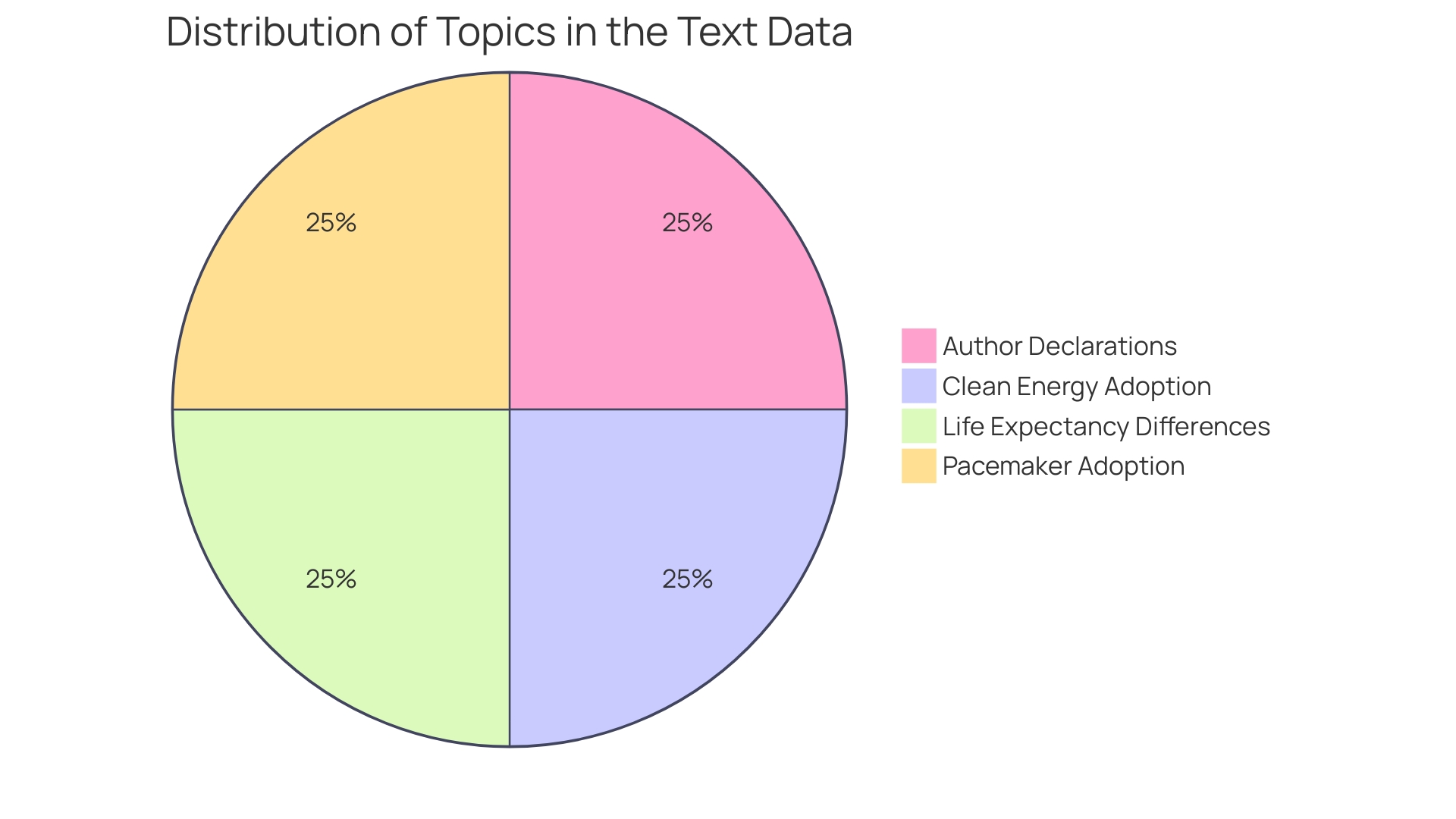Introduction
Autism Spectrum Disorder (ASD) is a neurodevelopmental condition characterized by social, communicative, and behavioral challenges. With a prevalence of approximately 1 in 45 adults in the United States, it is crucial to recognize the signs of ASD in adults, as the core traits persist throughout life. Early intervention is key in addressing social communication symptoms and repetitive behaviors, as well as providing support for children with ASD.
Detecting early signs of ASD in infants and toddlers, such as delayed response to their name or limited social interaction, can lead to timely interventions and improved outcomes. The diagnosis process involves a comprehensive evaluation by a team of specialists, utilizing criteria outlined in the DSM-5. Dispelling misconceptions about autism and understanding its variability is essential for tailored support strategies.
Early diagnosis and intervention are vital for maximizing a child's development and connecting families with crucial resources. By embracing the spectrum of autism and staying informed on the latest research, we can provide hope and practical support to individuals with ASD and their families.
What is Autism?
Autism Spectrum Disorder (ASD) is a comprehensive neurodevelopmental condition that manifests in a variety of interpersonal, communicative, and behavioral challenges. Individuals with ASD often encounter considerable challenges in interaction and communication, exhibiting patterns that involve repetitive behaviors and a narrow scope of interests. With its spectrum nature, ASD impacts each person uniquely, presenting a range of abilities and difficulties.
National statistics reveal that approximately 1 in 45 adults in the United States have been diagnosed with ASD. While public awareness and advocacy have increased, many adults might live without a diagnosis, unaware that their life experiences may be influenced by ASD. Recognizing the signs of ASD in adults is critical, as the core traits—difficulties in social communication and restrictive, repetitive behaviors—are consistent across all ages.
The process of diagnosing ASD typically depends on a combination of a caregiver's insights and professional observations. The DSM-5 offers a structured framework to support this diagnosis. However, the journey doesn't end with diagnosis. Educational approaches, such as the TEACCH program, underscore the importance of consistency and visual learning for those with autism, suggesting structured classroom adjustments can lead to positive outcomes.
Recent studies have indicated a sharp rise in ASD diagnoses among adults, particularly in the 25 to 34 age group. This surge underscores the importance of assessing and understanding ASD across the lifespan. Clinicians use a variety of tools and may refer to specialists like neurodevelopmental pediatricians or pediatric neurologists for further evaluation, highlighting the necessity of a comprehensive approach to assessment and diagnosis.
Embracing the concept of neurodiversity is becoming more prevalent in society and the workplace, as evidenced by initiatives like the National Geospatial-Intelligence Agency's neurodiversity pilot, which specifically aimed to recruit autistic individuals. This acknowledges the unique strengths and contributions of the neurodivergent community, enriching our collective understanding and fostering a more inclusive environment for all.

Early Signs of Autism: Social Communication Symptoms
Autism is characterized by unique patterns in communication and interaction. For example, individuals on the spectrum may not participate in the usual newborn captivation with faces and biological motion, which is fundamental for the advancement of intricate interpersonal connections. Their trajectory of attention differs from their peers, as observed in studies where autistic individuals displayed unique attentional preferences when viewing cartoons. This divergence suggests the need for early interventions that concentrate on attention to society, potentially helping to align their developmental path with that of typically developing children.
Furthermore, it's not only about what is expressed, but how it's expressed that presents difficulties for those with ASD. The nuances of speech, such as intonation, rhythm, and volume—collectively known as prosody—can be particularly difficult for them to interpret. Research from the University of Rochester revealed that this might stem from difficulties in processing and adapting to speech pattern changes. Adolescence marks a critical period where expanding interpersonal networks and linguistic experiences can further affect the understanding of prosody, highlighting the importance of support during this developmental stage.
In addition, repetitive behaviors and specific interests, often accompanied by sensory processing sensitivities like auditory hypersensitivity, can impact the quality of life for individuals with autism. The capacity to handle intricate cues, such as facial expressions and gestures, and participate in conversations is essential to communication within communities, yet it is one of the central obstacles encountered by children with autism. In addressing these communication barriers, interventions targeting joint attention—a preverbal form of interpersonal communication—are pivotal. Such approaches lay the groundwork for verbal communication and provide compelling reasons for toddlers to communicate, thus nurturing their language competency.
It is also crucial to acknowledge that the condition presents itself across a spectrum, with diverse experiences among individuals, including girls, women, and transgender or non-binary people. Behaviors like stimming serve as a regulatory mechanism for those experiencing sensory overload or other emotional challenges.
To summarize, improving communication skills in individuals with autism necessitates a comprehensive approach that encompasses early intervention, awareness of individual attentional preferences, assistance in interpreting speech variations, and techniques for addressing sensory sensitivities. Tailored support can pave the way for better outcomes and assist autistic individuals in navigating their unique social environments.
Early Signs of Autism: Repetitive Behaviors and Restricted Interests
Autism, a developmental disorder, often presents with unique behaviors and interests, which can be key early indicators. These may manifest as repetitive actions, such as hand-flapping or spinning, or as intense, focused interests on specific items or routines. It's crucial to recognize that these behaviors serve a purpose for autistic individuals, providing comfort or a way to cope with sensory input. Actually, the UC Davis MIND Institute's research suggests that alterations in these repetitive behaviors are intricately connected to the individual's mental health. Modifications in these behaviors during elementary school could correlate with the onset of additional mental health challenges.
Understanding these behaviors in the context of a young person's overall health is also crucial. Individuals with autism have a greater chance of experiencing gastrointestinal problems, which can affect their behavior and overall welfare. It's reported that they are four times more susceptible to gastrointestinal problems than their neurotypical peers. Therefore, a holistic approach that takes into account medical and nutritional factors is crucial for supporting individuals with autism.
The MOBSE framework, developed by Dr. Smile's team at Holland Bloorview, emphasizes the significant role of parent-child relationships and parental anxiety, especially around feeding and nutrition. It encourages parents to maintain a stable environment that supports their offspring's medical and nutritional needs, which can include managing food allergies, acid reflux, and other digestive concerns.
Supporting the development of an individual with autism also involves fostering clear communication and using tools that align with their unique needs. The use of simple language, clear speech, and visual aids such as pictures or symbols can be beneficial. Additionally, communication methods like Makaton and the Picture Exchange Communication System (PECS) provide alternative ways to facilitate understanding.
As research continues to evolve, it is imperative for families and advocates to stay informed on best practices and resources available. The UC Davis MIND Institute, a collaborative hub for autism research, emphasizes the significance of individualized and evidence-based support systems to assist in the development of autistic individuals. By nurturing an atmosphere that comprehends and appreciates the individual requirements of children with autism, parents can assist them in maneuvering their environment with increased assurance and backing.
Key Indicators of Autism in Infants and Toddlers
Autism Spectrum Disorder (ASD) is a intricate developmental condition characterized by challenges in interaction, communication, and repetitive behaviors. Detecting early signs of ASD is crucial, as early intervention can significantly improve outcomes. In young individuals, specific behaviors may indicate the need for a closer evaluation. These behaviors include an absence or delay in responding to their name, infrequent eye contact, a lack of showing or pointing out objects of interest, and a scarcity of smiles or expressions of joy.
Early diagnosis is crucial because it allows for timely interventions that can significantly improve the trajectory of a young person's development. Indeed, research indicates that joint attention, a critical aspect of preverbal interpersonal communication, plays a fundamental role in later linguistic skills and overall interpersonal development. By emphasizing these early social communication skills, interventions can give young individuals a compelling reason to communicate, laying the foundation for future verbal interactions.
Moreover, technology is emerging as a powerful tool in the early detection of ASD. Eye-tracking technology, for example, provides objective data that may reveal autism's developmental patterns. This approach can complement traditional methods that depend on expert clinical judgment and parental reports, potentially leading to more accurate and efficient assessments.
The diagnosis of ASD involves a multi-faceted approach, utilizing parent or caregiver reports and professional observations. The DSM-5 provides guidelines for diagnosis, but a variety of resources and potential referrals to specialists like neurodevelopmental pediatricians or pediatric neurologists may be necessary. Approaches such as the Building Interactive Social Communication (BISC) program extend previous research and apply a mediated learning approach, where early intervention providers empower parents to support their offspring's social learning, enhancing the offspring's development and the family's ability to promote social skills.
Recognizing early signs and the significance of a prompt reaction is crucial for parents, caregivers, and professionals alike, as they navigate the path of assisting individuals with ASD.
Developmental Milestones to Watch for Autism
Keeping an eye on a child's developmental milestones plays a crucial role in the early identification of autism spectrum disorder (ASD). Important stages to observe include the acquisition of emotional and interpersonal skills, language and communication abilities, cognitive skills like thinking and problem-solving, as well as physical development. Delays in speech and language, limited social interaction, and repetitive or unusual behaviors can be signs that warrant further evaluation. While it's important to acknowledge that not every developmental difference indicates a condition, these signs should initiate a discussion with a healthcare professional. Informed by the DSM-5 guidelines, the evaluation of a young person's growth often involves both parental perspectives and clinical observation. Specialists such as neurodevelopmental pediatricians may be consulted for a comprehensive evaluation. Furthermore, groundbreaking investigation, involving the use of machine-learning models like 'AutMedAI' which has shown approximately 80% precision in identifying individuals below the age of two with the condition, is improving early detection. To support individuals showing signs of developmental delays, resources like 'Talking is Teaching' and 'Vroom' provide actionable insights to foster an individual's early cognitive and vocabulary development. For children with a developmental disorder, practical strategies recommended by healthcare professionals include using clear and simple language, visual aids, and allowing extra time for processing. Speech and language therapists can be invaluable in supporting communication development. Parents are encouraged to seek medical advice if developmental concerns arise at any stage.

Diagnosing Autism: Criteria and Process
The process of diagnosing a developmental disorder is multifaceted, engaging a team of specialists, including developmental pediatricians, psychologists, and speech and language therapists. They utilize the DSM-5, which is a critical tool in identifying spectrum disorder (ASD). This manual offers a set of standardized criteria for diagnosis, ensuring consistency across different cases. During the evaluation, professionals conduct a comprehensive observation of the individual's behavior, interview parents and caregivers, and assess the individual's social interaction and communication abilities.
Recent advancements in the field are enhancing diagnostic methods. For instance, groundbreaking investigation from Duke University has uncovered that monitoring the eye movements of young individuals in reaction to particular visual cues can provide valuable observations for diagnosing developmental disorders in medical environments. The tool developed, SenseToKnow, goes beyond conventional observation by detecting a broader spectrum of behaviors including facial expressions, gaze patterns, head movements, and blink rate. It also assesses motor skills through interactive on-screen games, which can be revealing, as motor skill delays are often among the earliest signs of developmental disorder.
ASD is a complex condition that manifests through various behaviors, and not all individuals will exhibit them in the same way or to the same extent. The variability of the condition is why no single diagnostic tool should be used in isolation. Diagnostics often involve a combination of assessments and may include referrals to specialists like neurodevelopmental pediatricians or early intervention programs for a more comprehensive analysis.
Understanding the intricacies of the diagnosis of ASD is crucial because, while ASD is known to have strong genetic components, environmental factors also play a role in its development and severity. Early and accurate diagnosis is key, as it can open the door to early intervention, which is associated with more optimal outcomes. Sadly, only a small fraction of children with ASD, around 10-20 percent diagnosed before the age of five, are able to live independently in adulthood. This highlights the importance of continually improving diagnostic techniques and supports the ongoing exploration into the conditions underlying dynamics.

Common Misconceptions and Co-occurring Disorders
Dispelling misconceptions about individuals on the spectrum is vital for promoting comprehension and facilitating the appropriate assistance. Autism Spectrum Disorder (ASD) is not synonymous with intellectual disability; indeed, only about half of those with ASD have an associated intellectual disability. Autism and comorbid conditions like ADHD, anxiety, and intellectual disabilities present a complex interplay that, when understood, can significantly enhance tailored support strategies. Recognizing the neurodiversity inherent in conditions such as ASD and ADHD—both of which are recognized as disabilities but not mental illnesses to be cured—is essential. The genetic factors contributing to the condition are complex and not fully deciphered yet; however, the condition is characterized by social interaction difficulties, repetitive behaviors, and heightened or reduced sensitivity to sensory input. It's a spectrum, affecting individuals differently and to varying extents. The CDC estimates that as many as 1 in 36 individuals may be on the spectrum, highlighting the importance of early diagnosis and the implementation of supportive measures that honor the unique experiences of each person with ASD.

Importance of Early Diagnosis and Intervention
Identifying and providing assistance to individuals with autism spectrum disorder (ASD) as early as possible can have a significant impact on their development. ASD is a complex condition with a broad range of symptoms and abilities, and it affects individuals regardless of ethnicity, race, or socioeconomic status. Due to the developmental challenges associated with ASD, such as communication difficulties and repetitive behaviors, early intervention is key. When individuals at a young age are diagnosed early, they can begin receiving specialized support that addresses their unique needs, leading to improved language skills, social interactions, and overall functioning.
The importance of early diagnosis cannot be overstated. It paves the way for early intervention, which has been shown to offer the best outcomes. Indeed, only a small fraction of individuals diagnosed with ASD before the age of five are able to live independently as adults, underscoring the value of prompt support. Interventions based on the latest research, which now favors randomized-controlled trials over quasi-experimental studies, can be more effectively tailored to the individual's needs. Furthermore, early diagnosis connects families with crucial resources and support networks, aiding them in advocating for their child.
Research has evolved, with studies now being conducted worldwide, not just in Western countries. This worldwide outlook is crucial, as it mirrors the ubiquitous character of the condition and the necessity for assistance across varied communities. Scientists such as Naviaux are discovering the connections between genetic and environmental elements that impact the initiation of the condition, providing fresh knowledge into early identification and therapy.
With the proper method, children with the condition can receive the assistance they require much earlier. This can dramatically change the trajectory of their lives, helping to ensure that they can achieve their full potential. By acknowledging the spectrum of autism and embracing the latest research, we can offer families hope and practical support from the earliest stages.
Conclusion
In conclusion, early intervention is crucial in addressing the social communication symptoms and repetitive behaviors associated with Autism Spectrum Disorder (ASD). By detecting early signs of ASD in infants and toddlers, timely interventions and improved outcomes can be achieved. The diagnosis process involves a comprehensive evaluation by a team of specialists, utilizing criteria outlined in the DSM-5.
It is essential to dispel misconceptions about autism and understand its variability for tailored support strategies.
Enhancing social communication skills in children with autism requires a multifaceted approach, including early intervention, understanding of individual attentional preferences, support for interpreting speech variations, and strategies for managing sensory sensitivities. Recognizing the early signs of autism, such as repetitive behaviors and restricted interests, is crucial for early intervention. A comprehensive approach that considers medical, nutritional, and behavioral factors is essential for supporting autistic children holistically.
Diagnosing autism involves a comprehensive evaluation by a team of specialists, utilizing standardized criteria outlined in the DSM-5. Recent advancements in the field, such as eye-tracking technology, are enhancing diagnostic methods. Dispelling myths about autism is crucial for fostering understanding and facilitating the right support.
Autism is not synonymous with intellectual disability, and recognizing the interplay between autism and comorbid conditions can enhance tailored support strategies.
Recognizing and supporting children with ASD as soon as possible can make a significant difference in their development. Early intervention, based on the latest research and tailored to the child's needs, leads to improved outcomes. By acknowledging the spectrum of autism and embracing the latest research, we can offer families hope and practical support from the earliest stages.




